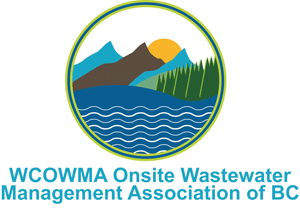How does my septic system work?
Some 25 % of Canadians treat their wastewater with a septic system.
A septic system treats your wastewater on your own property and releases clean treated water back into the groundwater. A properly functioning septic system receives your household’s wastewater and treats it to a safe level before returning it to the environment.
Every sytem is unique, today, there is a multitued of design methods used. Its best to have an assessent done on your system for a sense of where components are located and its function.
A conventional septic system is composed of a septic tank and a soil filter also called a leaching bed, dispersal or drain field. The septic tank separates liquids from solids and helps to break down some of the organic matter in wastewater. Partially treated wastewater from the septic tank flows into the dispersal field. The drain field is typically a network of perforated plastic pipes. The dispersal area is a soil filter that uses natural processes to treat wastewater from the septic tank. The septic tank and dispersal field must be professionally installed to ensure correct and safe operation.
How do I know if there is a problem with my septic system?
Warning signs that there may be a problem with your septic system include the following:
- The ground around your septic tank or drain field is soggy or spongy to walk on
- There is lush green zones concentrated in areas of your dispersal system
- Sewage odours are noticeable
- Gray or black liquids are surfacing in your yard or backing up through the fixtures in your house
- Nearby low or areas or ditches are showing signs effluent
- Toilets, showers, and sinks are backing, gurgling, or taking longer than usual to drain
- Backup of sewage into your house
- Needing to frequently pump your septic tank
- A change in plant growth and algae (excessive growth) in nearby ponds and lakes
- Contamination in well water tests (increased levels of nitrates and coliform bacteria
Can my malfunctioning (failing) system be restored?
It depends…… the first step is a proper assessment of your system to determine what the cause of malfunction is. In many cases failing systems can be restored but we don’t want you to spend money attempting, only to have that money go to waste if the attempt proves futile. Over the past few years, we’ve succeeded in restoring dozens of systems that were doomed by others, in fact, we believe that ‘most’ but not all systems ‘can be restored’ using augers, jetters, cameras, and a little elbow grease.
Case study: In 2010 a homeowner in Saanich was ‘just about to’ tear up their yard & spend $28,000 on a new septic system when a neighbor recommended that they give us a call.
After about $4,000 worth of restoration, the system was back functioning in a normal manner with an effluent filter, modern access ports and an ongoing Maintenance Plan. Since then we’ve been maintaining the system every couple of years and all reports are operating in a normal manner. The maintenance cost is approximately $500 every two years which is less than the new $28,000 systems maintenance was going to cost – AND - that new system was going to have a number of mechanical components that draw power and eventually would require ‘expensive’ replacement.







